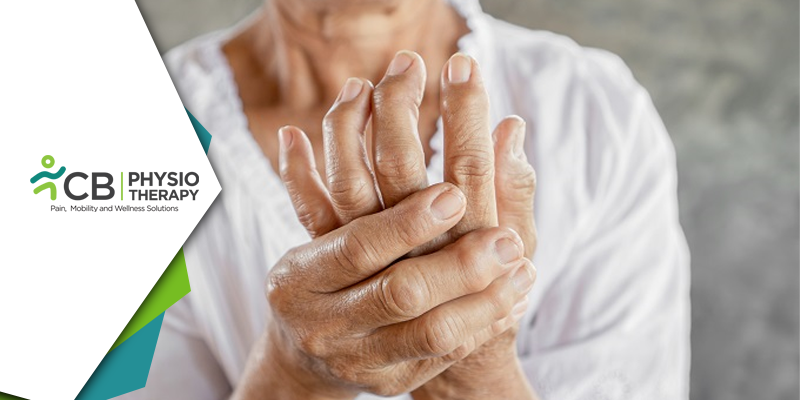Winter is a season of discontent for people suffering from Arthritis. This is because of the fall in barometric pressure (pressure within the atmosphere of the earth), which can cause joints to expand, resulting in pain and inflammation. During winter low temperatures may increase the thickness of the synovial fluid (joint's shock absorber), which makes joints stiffer and more sensitive to pain. Winter season can also affect our DNA by simultaneously decreasing the genes in our body that suppress inflammation. Here in this blog are some tips to ease joint pain, and maintain bone health during the winter.
Effects of Cold Weather on Arthritis
Winter season has a significant impact on our health, especially for those who are suffering from arthritis. There is a lot of damage done to the cartilage and bone cells. As the temperature drops, bones usually become stiff and inflexible, which can increase discomfort or Pain in the joints, leading to depression and anxiety making life troublesome.
More pain is felt during low temperatures, this is because cold temperatures reduce blood flow around the body, and reduced blood flow can increase nerve pain. A drop in air pressure can negatively impact nerve pain, thus aches and pains are experienced more.
During winter most people go out less, don't exercise much, or see other people so frequently. These lifestyle factors can have an impact on mood – and depression makes the pain worse. Depression usually leads to reduced activity and our joints end up getting less and less mobile. The activity decreases as temperatures drop. It becomes hard for an individual to exercise and keep active in winter. Most arthritic patients suffer a flare-up of symptoms because they are not active in the cold season, which stiffens their joints and causes pain to worsen during movement.
Tips to Cope with Arthritis in Cold Weather
Physiotherapy:
The physiotherapist can develop a program that can help improve mobility and functionality. And an individual gets acquainted with the kinds of exercises and electrical modalities like TENS, Ultrasound, Thermotherapy, Laser therapy, Wax therapy, etc that can make a huge difference in joint pain.
Exercises
Mobility is crucial for people living with arthritis. To maintain strength and flexibility muscle fibers in our body need to flex and contract. When the weather turns low people tend to move less and reduced mobility results in an increase in pain and stiffness in arthritic joints, which makes exercise challenging to begin with. An individual with arthritis with no other severe health conditions is advised to do at least 150 minutes of moderate-intensity aerobic activity a week and two weekly sessions of strength training. Little light exercise, stretching, and walking are considered to be enough for people with arthritis. Even regular massages on affected joints are also recommended as they increase the blood flow and this keeps the joints warm.
Keep warm
Heat therapy is very effective for stiff joints. It increases blood flow to help flush out pain-producing chemicals and stimulates receptors in the skin that improve pain tolerance. Warmth also relaxes muscles, reduces stiffness, and decreases spasms. Heat therapy can be applied by heating pads, taking a warm shower or soaking in a tub, electric blankets, and single-use hand and feet warmers can slip into pockets, gloves, or shoes.
Vitamin D
Vitamin D reduces pain in arthritis sufferers. During winters Vitamin D levels drop due to the reduced light, so it may be worth considering a supplement if Vit D levels are low
Dress Warmly
Keep aching hands, knees, and legs warm with gloves, tights or leggings, and boots. Add extra layers of clothing, when going out in winter. More layers of clothing, trap the body heat than wearing thicker clothes. When buying outerwear, choose clothes that can be worn with ease and should protect from bad weather. But these clothes should not hinder movement and even affect balance
Stay Hydrated
Dehydration can increase pain sensitivity. Water flushes toxins out of the body, which can help fight inflammation. Also, water helps keep the joints well-lubricated.
Wear compression Gloves
Accessories like gloves, scarves, hats, and boots are important, as the majority of the heat is lost from the body's extremities. A pair of thermal compression gloves help improve the symptoms of arthritis. They vary in style and technology, provide compression to reduce swelling as well as emit or help trap heat to provide a warming sensation. Most styles are fingerless, so they are not suitable for outdoors. Even mittens can also be used as fingers generate more heat when they're not separated from each other by fabric, as they are with gloves.
Assistive aids
During winter select footwear that provides stability and traction. Before going out, muscles should be warm and relaxed, which can make it easier to keep balance. For more stability, consider a cane, walker, or even trekking poles to help maintain balance.
Weight Loss
Weight loss and Exercising go hand in hand to relieve pain and symptoms associated with arthritis. Weight loss reduces the amount of weight the joints have to deal with. Being overweight places a lot of pressure on the knees and hip joints, which increases the risk of impairment.
Different type of arthritis requires different methods to treat, whereas the above methods may work in all.

